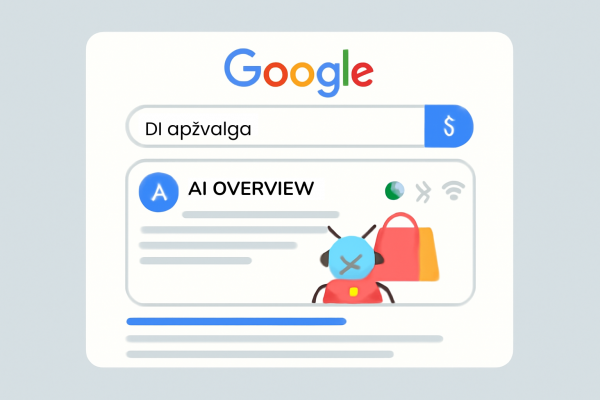
Google AI Overview refers to the AI-generated summaries or responses that appear directly within Google’s search results page (SERP). This feature uses artificial intelligence to quickly process information from multiple sources and present a concise answer to the user’s query in a Google Snippet–style format. It allows users to obtain the information they need without clicking on any links or visiting external websites.
In many cases, Google AI Overview appears at the top of the search results page, often occupying the most prominent positions, which gives it high visibility and makes it one of the first things users see when performing a search.
There are specific processes that help optimize online content so that it is more likely to be displayed or selected as an AI-generated response within Google’s search results. This practice is known as AEO (Answer Engine Optimization) — a strategy focused on improving content to make it more suitable for AI-driven search systems that provide direct answers to user queries.
In about 90% of cases, Google’s AI Overview is generated using content from the top 1–3 organic search results. This means that Search Engine Optimization (SEO) is closely connected to Answer Engine Optimization (AEO) and plays a crucial role in increasing the chances of your website being featured within AI-generated overviews.
Effectively combining SEO and AEO strategies ensures that your content not only ranks higher in traditional search results but is also recognized by Google’s AI systems as authoritative and relevant, making it more likely to appear in these high-visibility AI summaries.
It’s important to understand that Google AI Overview doesn’t appear for all keywords. To optimize effectively, you first need to analyze which relevant and desired keywords actually trigger an AI Overview in Google’s search results.
Once you’ve identified the queries that display AI-generated summaries, the next step is to study and understand why Google chose certain sources to build its AI answer. By analyzing these examples—looking at content structure, clarity, and authority—you can then adjust and refine your own content to better align with Google’s AI selection criteria and improve your chances of being featured.
How does Google AI Overview affect other search results?
The display of Google AI Overview in search results can have a direct impact on the traffic of your website or online store.
Positive impact on organic traffic
If your site is optimized according to AI requirements, it can become one of the sources used by Google’s AI to generate the summary shown in search results. This provides your content with higher visibility and can enhance brand recognition, even if users don’t click through to your website. Additionally, being repeatedly referenced by Google AI builds trust and credibility, both with users and within search engine algorithms.
How Google AI Overview can negatively affect organic traffic
The AI Overview snippet can bring both positive and negative consequences for your SEO and organic performance. While it improves visibility, it can also reduce your click-through rate (CTR)—because users may find all the information they need directly within the AI-generated summary, without visiting your site.
As a result, even though your information reaches a wider audience, your actual website traffic might decline, since users no longer feel the need to click on your link, browse your site, or explore related products.
How to become a source for Google’s AI Overview
- Structure Your Content Clearly
Ensure that your product descriptions and web pages are well-organized, easy to read, and optimized for AI-based searches. Clear structure and concise formatting make it easier for Google’s AI systems to identify your website as a reliable information source when generating overviews. - Include Frequently Asked Questions (FAQ)
Incorporating FAQ sections on your website to help AI understand what types of questions users might ask about your products or services. This not only improves user experience but also increases the likelihood that your content will be selected and featured in AI summaries. - Implement Structured Data Markup
Use structured data (Schema.org markup) to help both search engines and AI systems better interpret your website’s information. Properly implemented structured data clarifies what your business, content, and products are about—boosting the chances that Google’s AI will use your site as a trusted reference when generating AI Overview responses.




